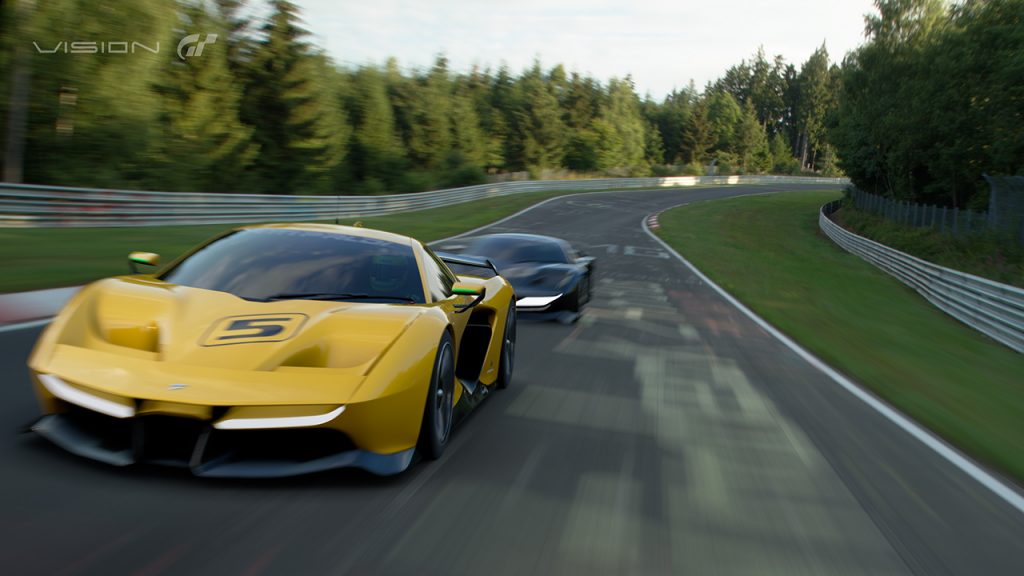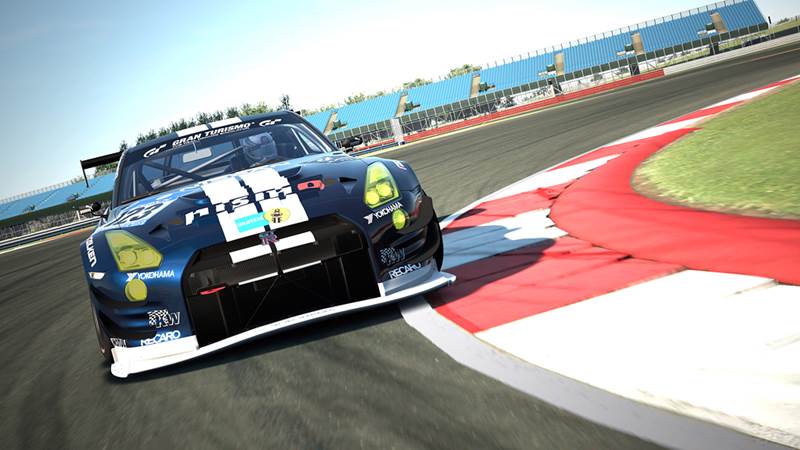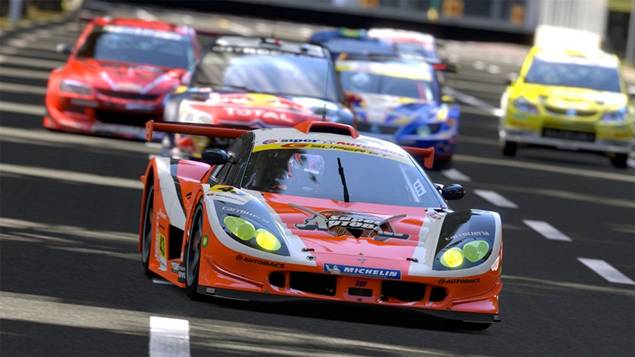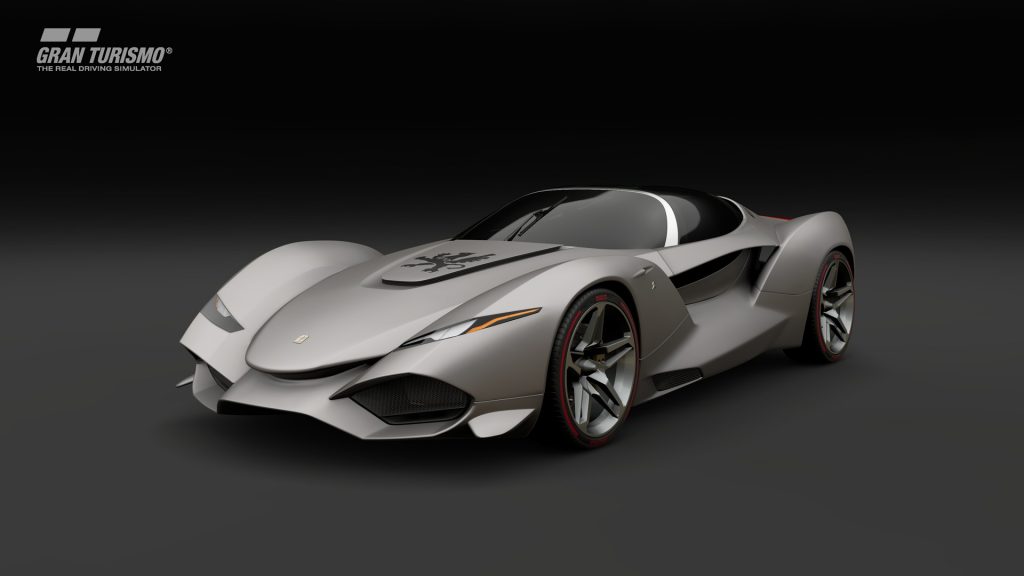
When thinking about simulation racing games in this console generation, it’s not unreasonable for your first thought to be “Forza”. Microsoft’s first-party sim-racer series has been wildly successful, and for many of us, it’s been the go-to franchise for quite some time. But simulation racing games weren’t always synonymous with Forza; there was a time when Polyphony Digital’s hardcore series, Gran Turismo, reigned supreme. While the long-time franchise continues to sell exceptionally well, there’s no doubt that it isn’t the young, spry series it used to be.
Back in 1992, producer Kazunori Yamauchi compiled a group of seven developers to create Gran Turismo for Sony’s upcoming PlayStation console. He aimed to bring simulation racing to the mainstream, and he was stopping at nothing to achieve that goal. For him, Gran Turismo’s development was his entire life. Yamauchi once stated to Autoweek: “It took five years. In those five years, we could not see the end. I would wake up at work, go to sleep at work. It was getting cold, so I knew it must be winter. I estimate I was home only four days a year.”
After those grueling five years of development time, its 1997 release was met with widespread critical and commercial success. It still holds the crown as the best-selling original PlayStation game to this day, having shipped over 10.85 million copies in its lifetime. And it’s no secret why; with 140 cars, 11 tracks, and great AI for its time, Gran Turismo was one of the most fleshed-out and impressive racing games ever made at that time in videogames, effectively achieving exactly what Yamauchi had hoped – mainstream appeal.
The unexpected success gave Yamauchi the drive to get to work on a sequel with hopes of improving the formula even further. By 1999, Gran Turismo 2 was hitting store shelves with an unprecedented 650 cars from a variety of manufacturers, making it even more robust and impressive than the original game. Unfortunately, a collection of errors and glitches plagued the game’s release, perhaps due to its rapid development, prompting Sony to issue updated replacements for those experiencing problems.
Luckily for the franchise, these problems didn’t seem to stop the game from receiving universal acclaim again, and Yamauchi was ready to keep things going. With the move to PlayStation 2, Polyphony Digital was able to improve the graphics substantially, allowing Gran Turismo 3: A-Spec to boast some of the system’s most impressively-detailed cars and tracks. This increase in detail meant the team had to reduce the amount of cars available in the game to 180 in order to ensure the quality remained high across the board.
The reduction in cars was a small price to pay for the beautiful graphics and enhanced gameplay. It didn’t take long before critics were singing the game’s praises and falling in love with its improved features and gameplay. It’s still one of gaming’s best-selling titles of all time, and is currently considered the second-best racing game of all time by aggregate site GamingRankings.
Not one to rest on his laurels, Yamauchi once again set out to continue his life’s work. Gran Turismo 4: Prologue teased the upcoming launch of Gran Turismo 4 with a sneak peak at the new and improved features Polyphony Digital were bringing to the full game’s launch. While the title only launched in Japan and Europe, it still went on to sell over a million copies.
When the full release of Gran Turismo 4 finally launched in North America in 2005, gamers and journalists were amazed. With 51 tracks and an unprecedented 700+ cars from 80 manufacturers, it was an awe-inspiring addition to the successful franchise, propelling it even further than before. The addition of pickup trucks, a B-spec mode that allowed players to simulate the job of a racing crew chief, and massively improved physics, all combined to make Gran Turismo 4 one of gaming’s most sought-after titles that year. It went on to once again become one of the best-selling video games of all time.
With the arrival of the PS3, Gran Turismo 5: Prologue’s Australian and European launch once again raised the bar for the series with better graphics and new gameplay elements, selling 5.09 million copies and becoming the second-highest grossing PlayStation exclusive. So, what game could have possibly unseated it from first place? None other than the full release of Gran Turismo 5, of course.
The fifth entry introduced gamers to 16-player online racing, a feature that saw players around the world ecstatic at the chance to finally pit their skills against other sim-racing fans. It also added the franchise’s first external and mechanical damage models and the ability to turn cars over during a race. Add that to the fact that the game offered over a thousand cars and plenty more offered through DLC, Gran Turismo 5 was doing what the series was always best known for: Improving beyond everyone’s wildest expectations.
However, the game was criticized for its mixed graphics and the detail of standard cars which lacked cockpit views. Furthermore, many critics and fans were not happy with the game’s damage model and the uneven AI. The game finished up with a rating of 84 on Metacritic which isn’t bad by any means but this when the series started to lose a bit of steam as well. Compared to GT1, GT2 and GT3 which were rated way above 90, and GT 4 coming very close to 90, one could easily see some cracks forming in the series’ quality.
Gran Turismo eventually showed up on Sony’s PSP in 2009, going on to sell nearly 5 million copies and becoming one of the best-selling games for the handheld. The game might’ve been on a portable system, but that didn’t hold it back very much. Running at a solid 60fps with over 800 cars and 45 tracks, Gran Turismo on PSP refused to be thought of as a lesser entry. Still, the game’s critical response was mixed, with many criticizing its lack of career mode and upgradeable vehicles. The game finished off at a rating of 74 over at Metacritic.
With Gran Turismo 6 launching near the end of the PlayStation 3’s lifecycle in 2013, some expected the game to see less success than previous entries. And while it didn’t initially see a slow takeoff in North America, the game went on to be a critical and commercial success. However, despite the fact that it offered a host of improvements to graphics and car customization, Gran Turismo 6 was criticized for its focus on its online component and microtransactions, marking the first time a franchise had seen many of its long-time supporters lose faith in Yamauchi and Polyphony Digital’s integrity. It finished with a Metacritic score of 81.
As new sim-racers like Forza had entered the playing field over the years leading up to Gran Turismo 6, gamers were offered new places to get their fix, leading many to speculate Gran Turismo’s days as the industry king were nearing the end. Forza was growing from strength to strength with its Motorsport and Horizon brands, while Gran Turismo was struggling to keep up.
2017 brought the release of Gran Turismo Sport and it saw a drastic change in direction for the franchise. It placed emphasis on competitive online driving and eSports, lacking a single player campaign when it launched. It also lacked dynamic weather and day/night cycle thanks to its always online requirement. However, it also improved on vehicle design and PvP elements making it a solid entry. But for most of the old fan base, GT Sport came off as a disappointment. Although Polyphony Digital have continuously added updates in the form of single player races, tracks and cars, and have started to gain traction again, many fans haven’t really forgotten its underwhelming launch and its disappointing Metacritic score of 75.
Gran Turismo Sport simply wasn’t Gran Turismo 7 though, and the desire for a core entry in the franchise remains. Yamauchi has gone on record promising that a new game in the series is on the horizon, and there has been speculation that the game may even serve as a massive boon to the PlayStation 5 launch lineup. There is no doubt that quality wise, Gran Turismo has seen a dip since the PlayStation 3 days. Gran Turismo Sport is a shining example of how developers can convert an underwhelming experience at launch to a fantastic one almost two years late.
We just hope that this isn’t the case with the next Gran Turismo. Gran Turismo as a brand has defined each PlayStation era and the next game needs to get it right from day one. We hope it will be beautiful combination of the past, present, and future games. If Yamauchi’s dedication to the series is any indication of its future, we’re hopeful that not only it will be worth the way, but it will stand toe to toe against fellow competitors.
Note: The views expressed in this article are those of the author and do not necessarily represent the views of, and should not be attributed to, GamingBolt as an organization.

















